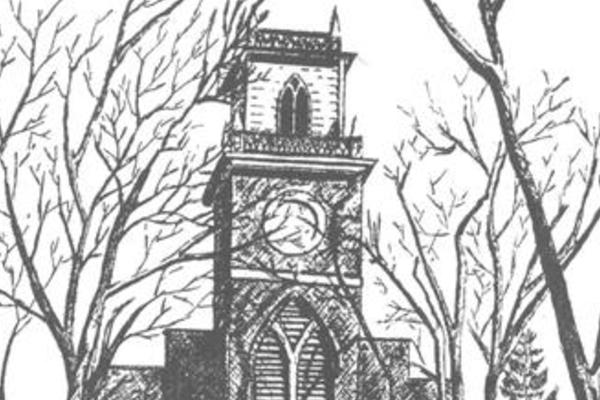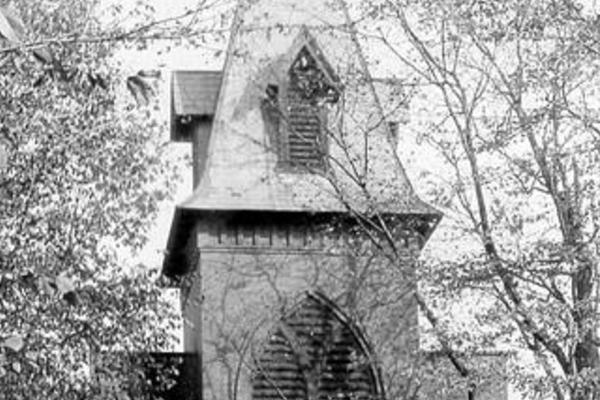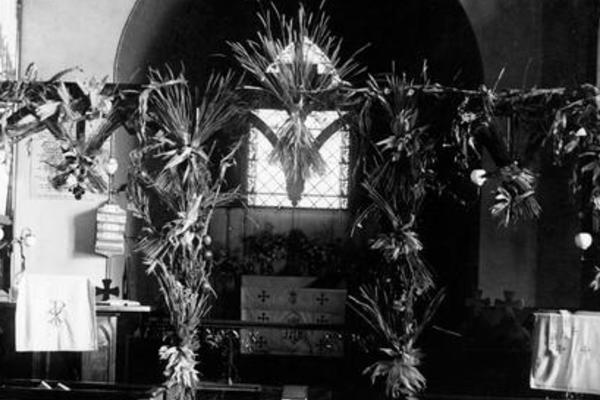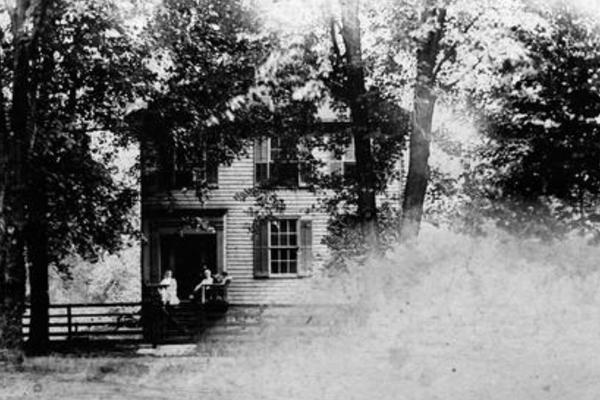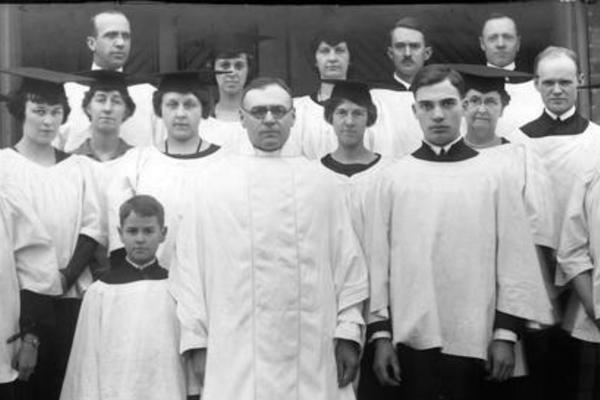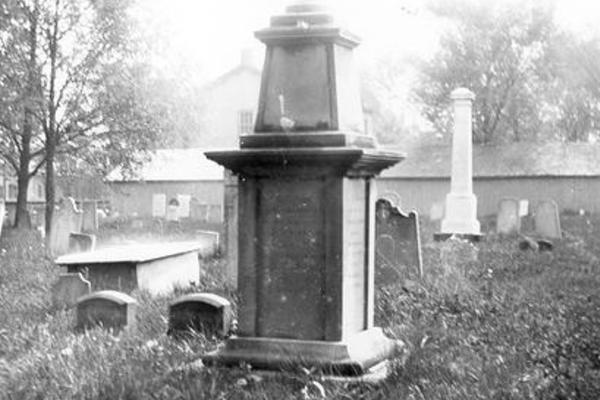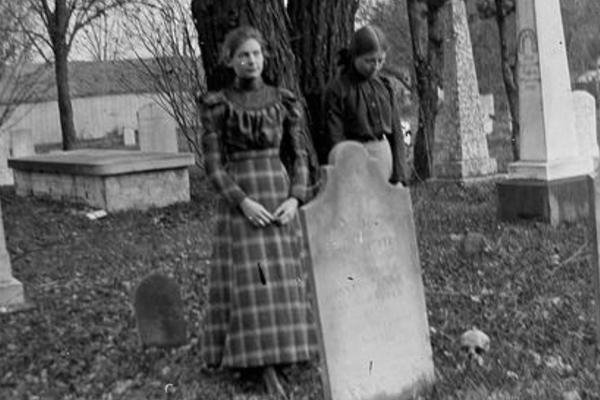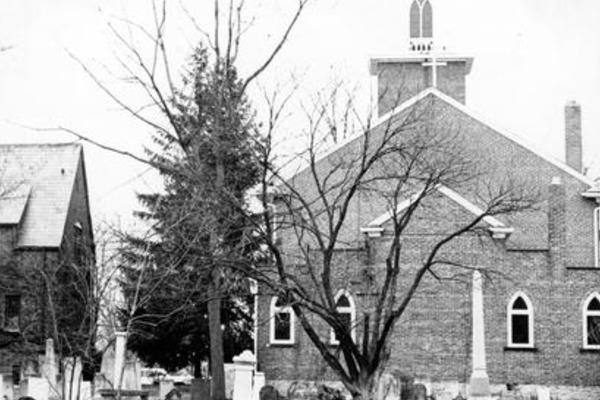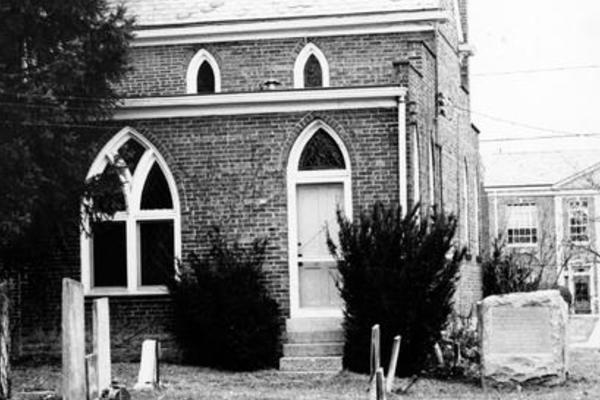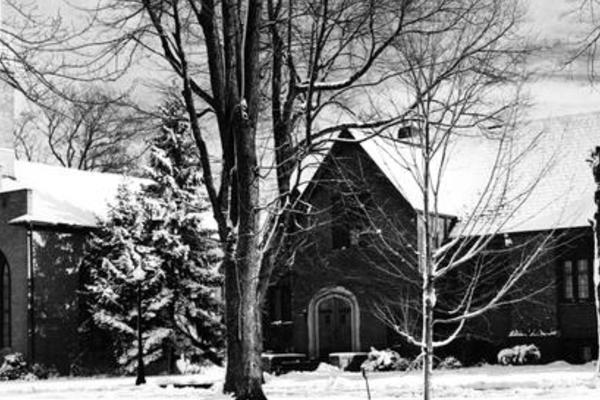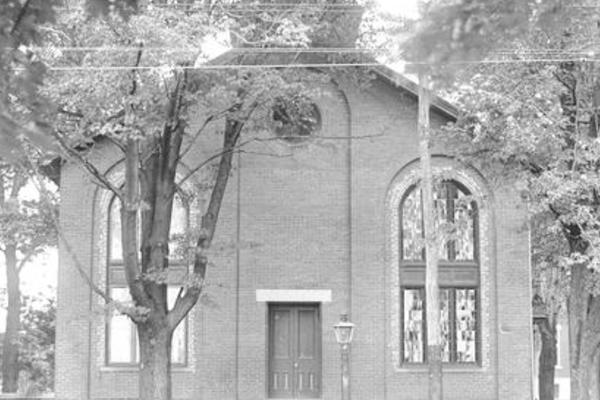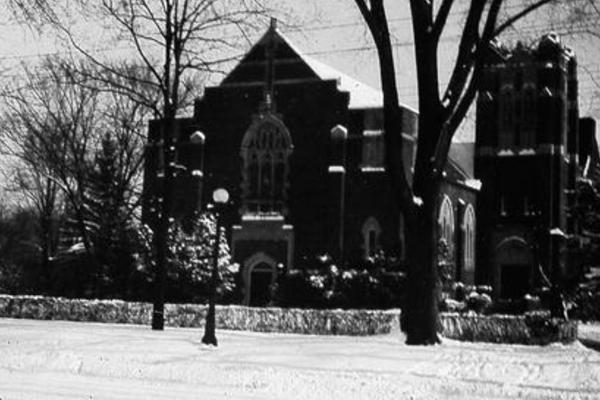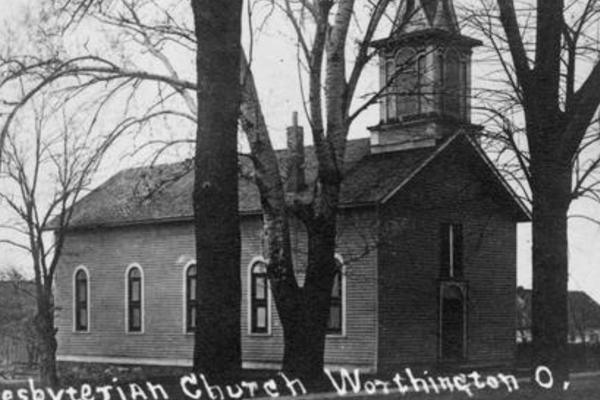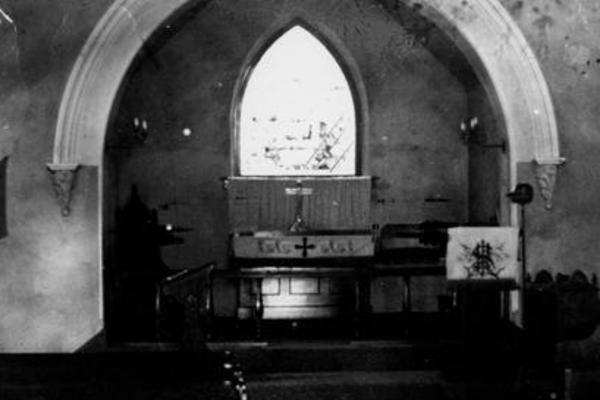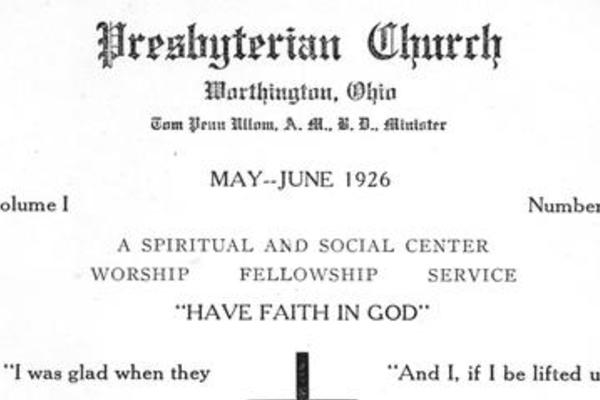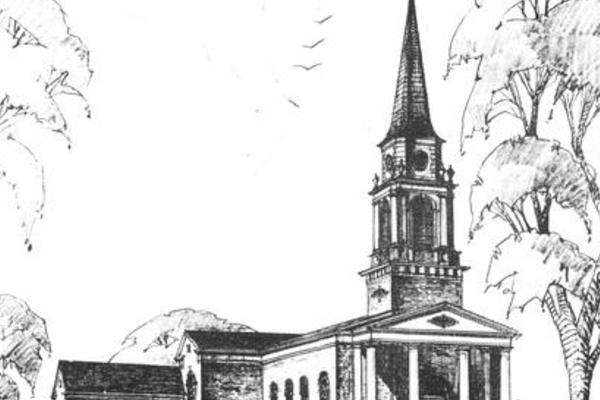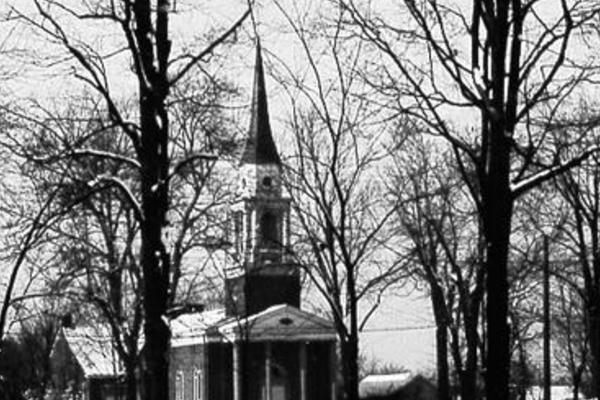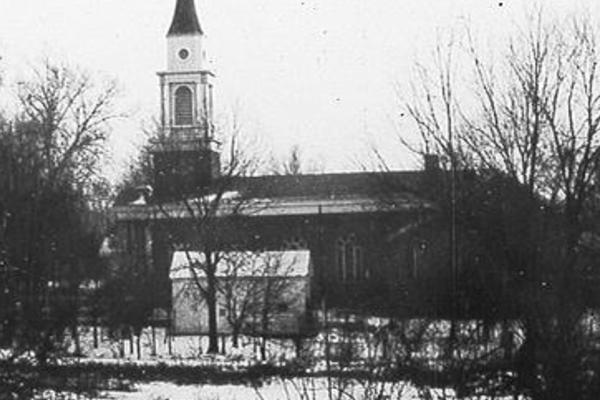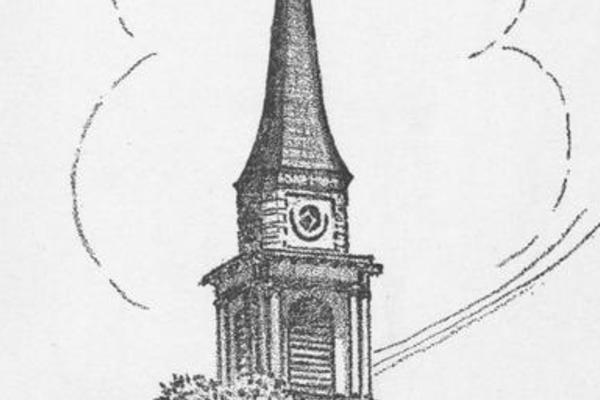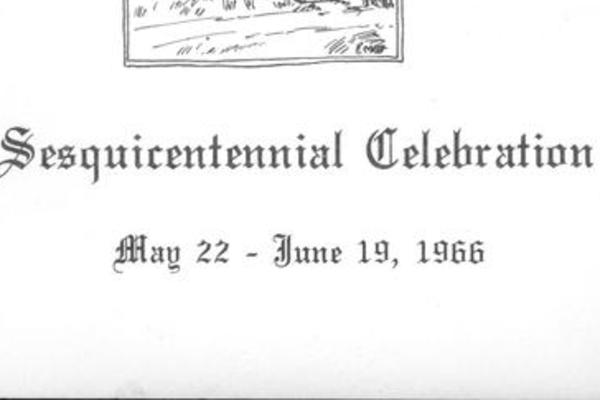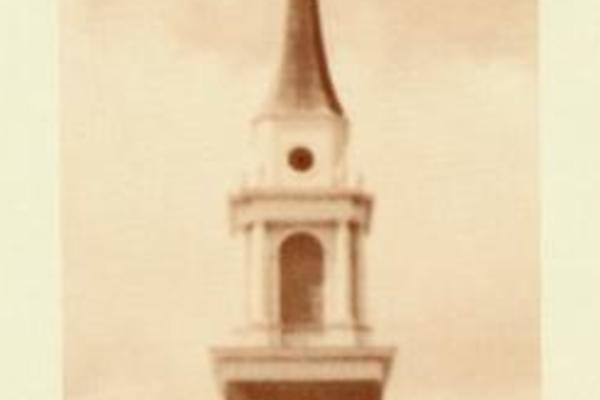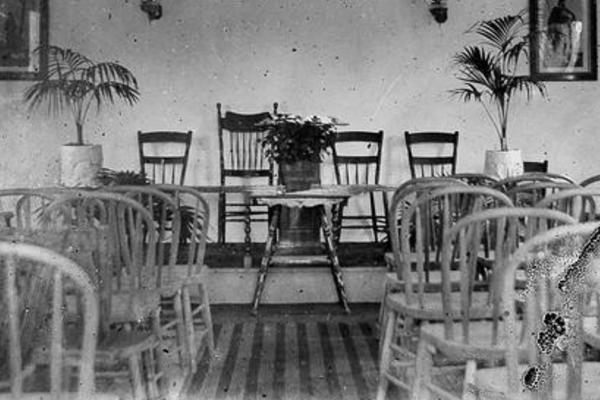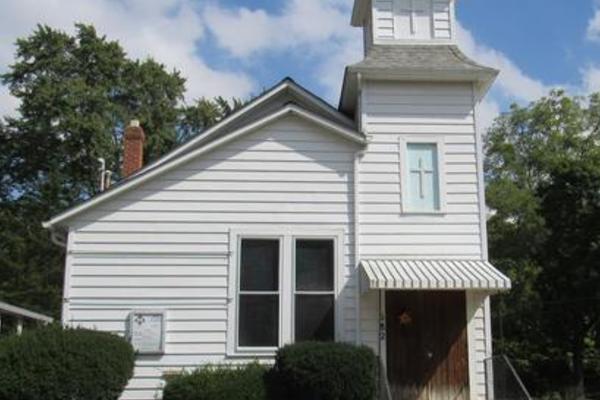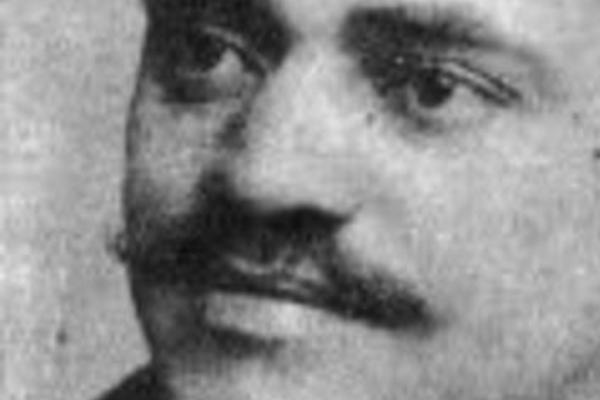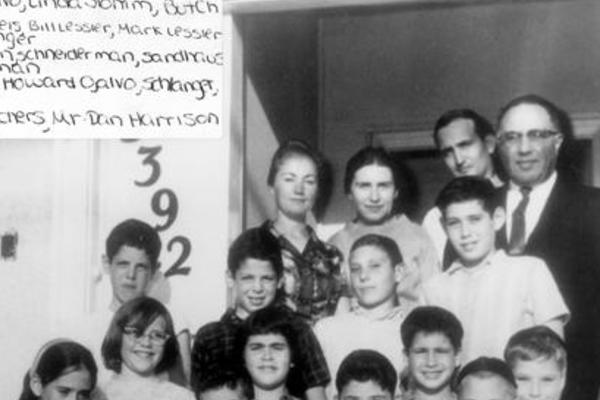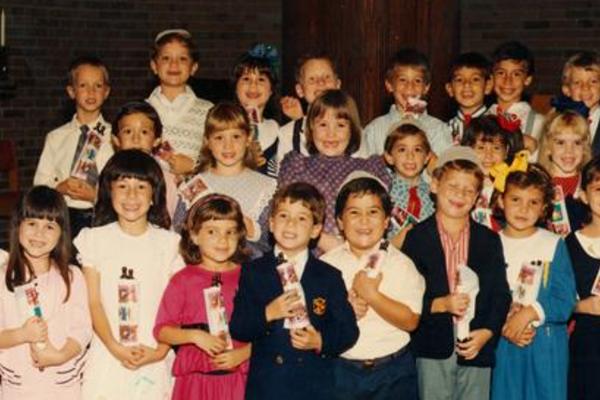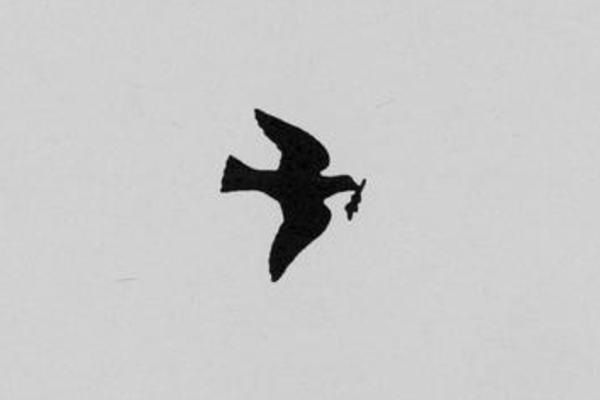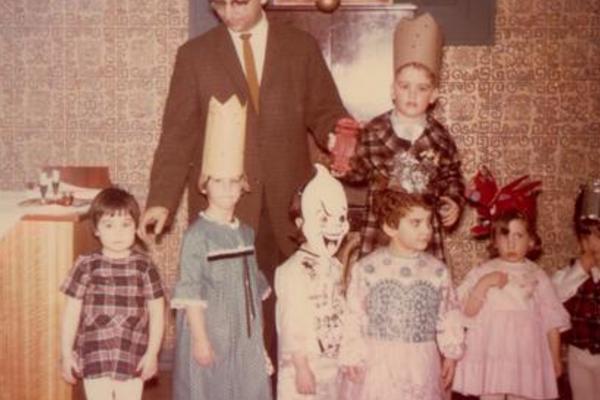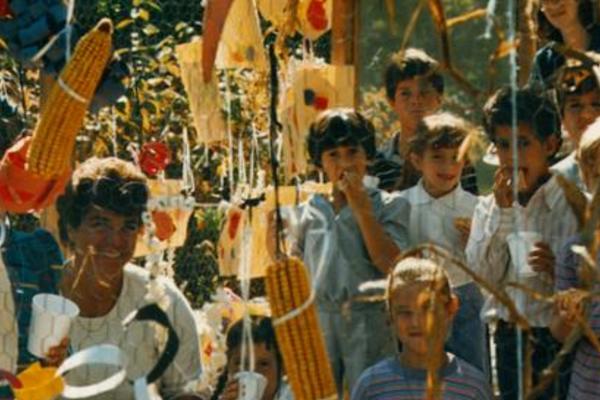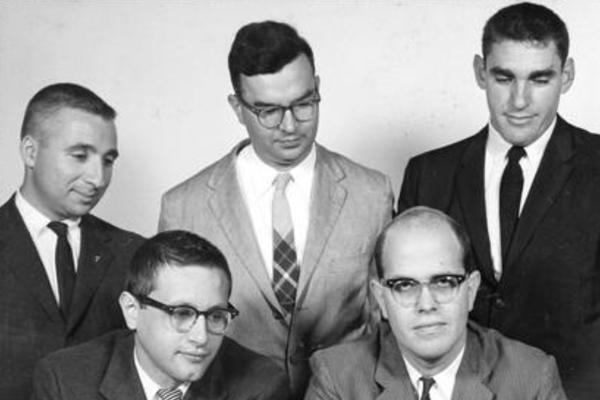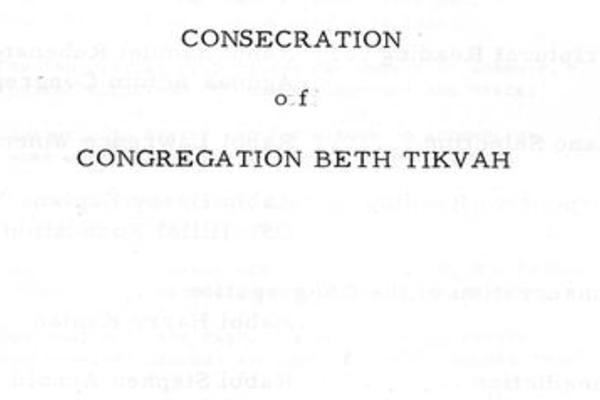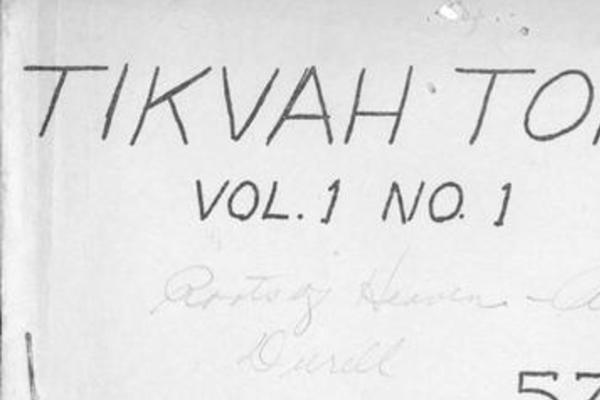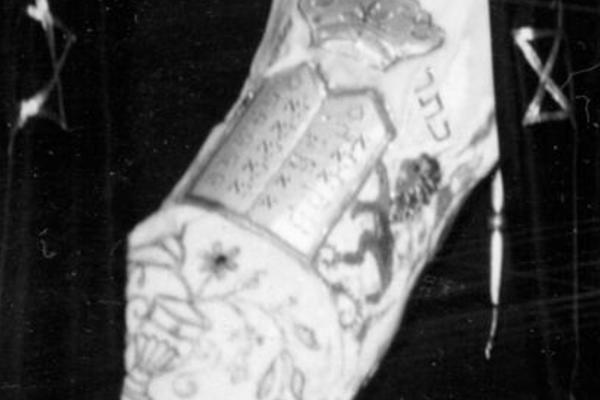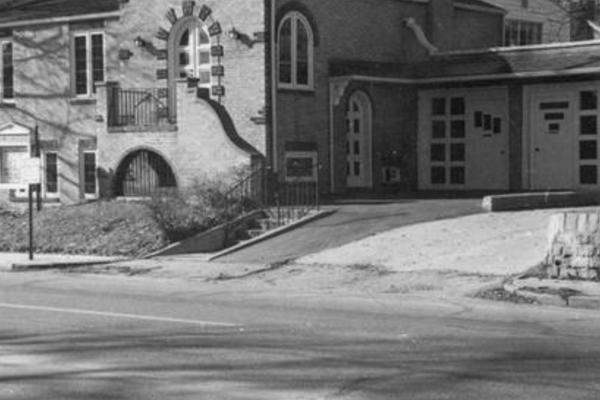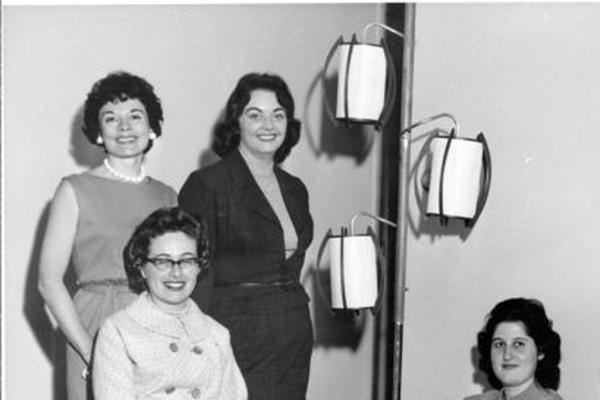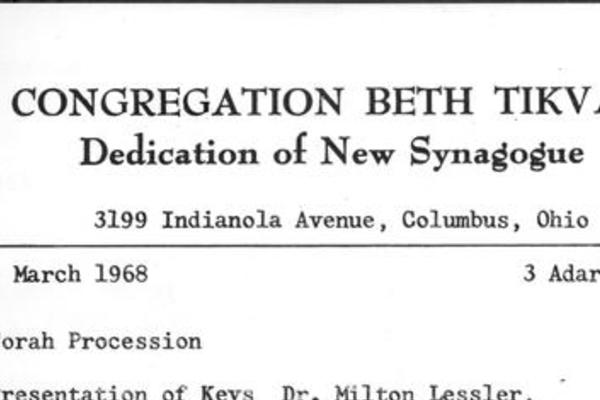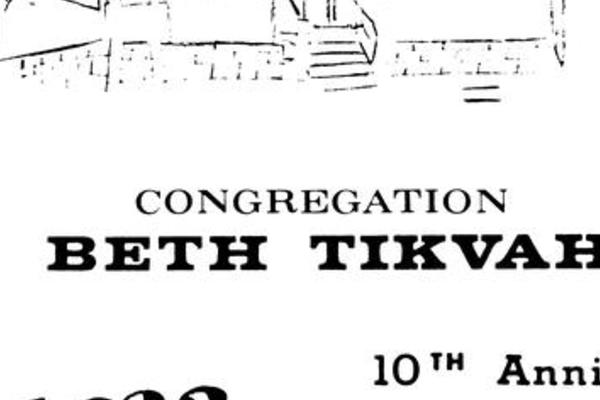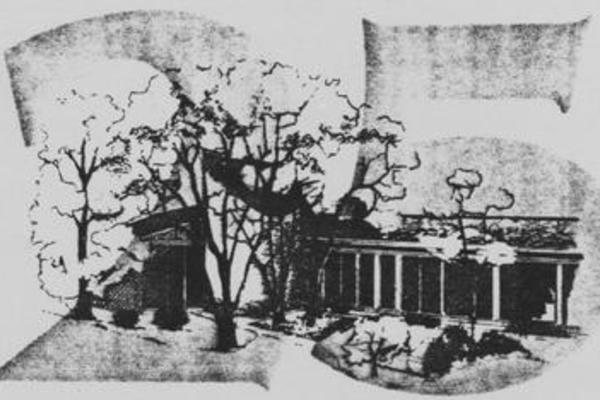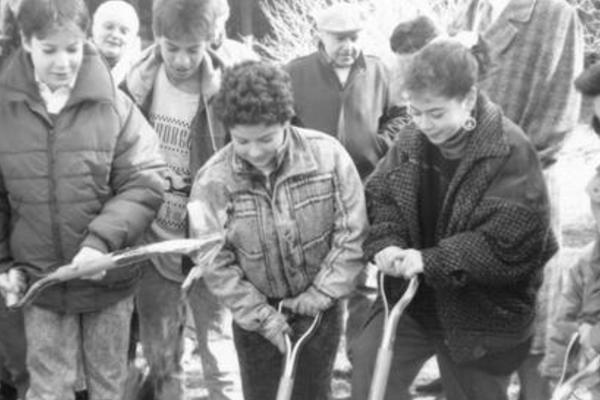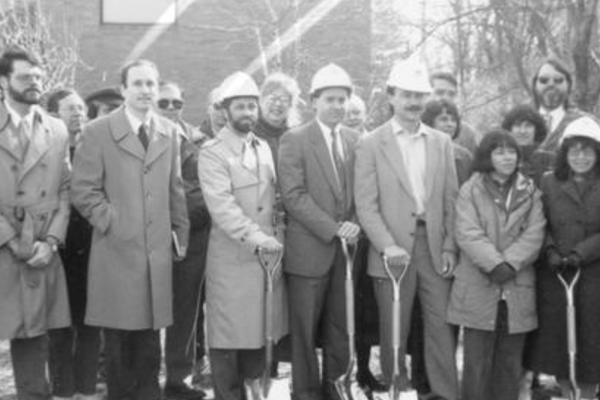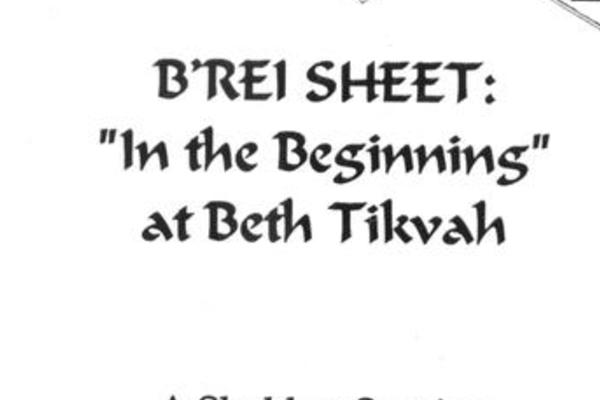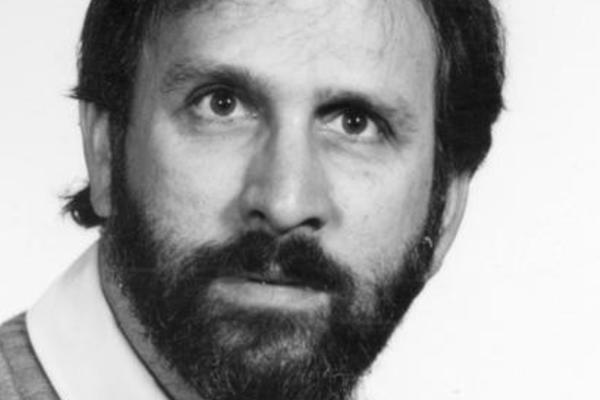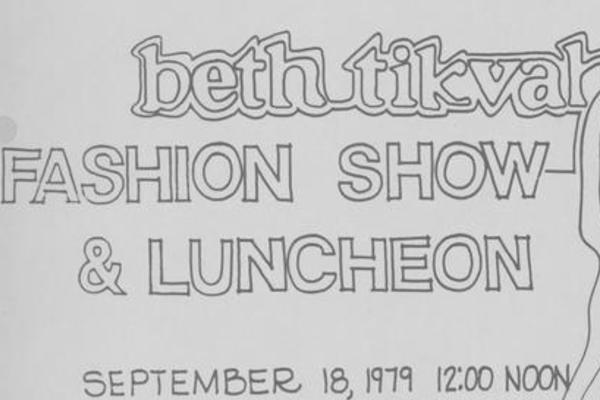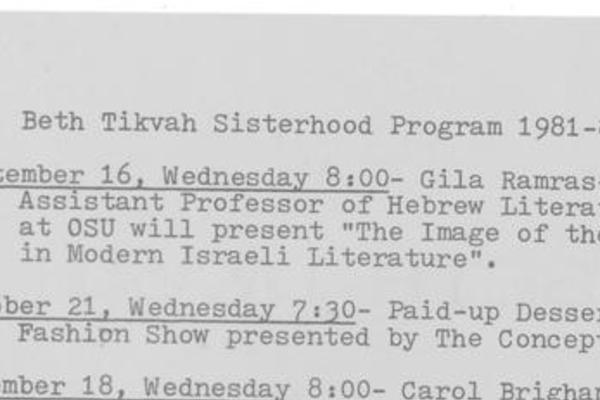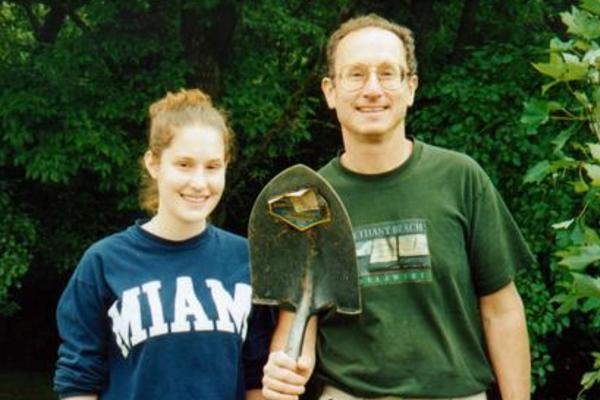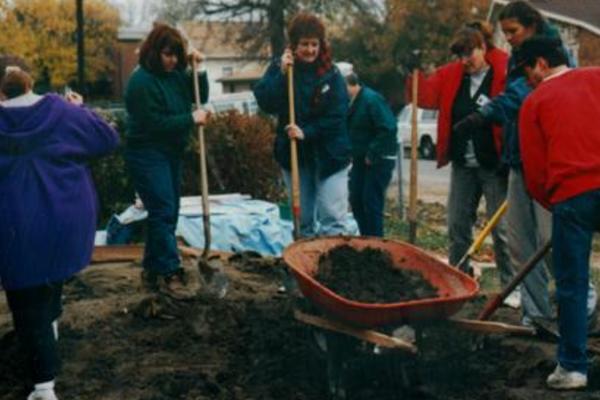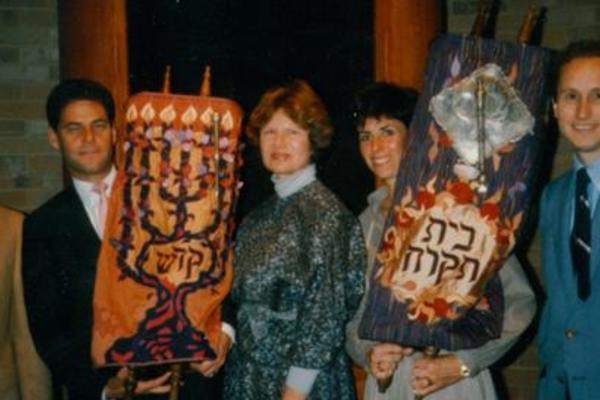Monday,
February 1, 2021
9:30am
Faith has been an important focus for Worthington community members since the village's inception in the early 19th century. Our February exhibit centers around the many places of worship located in Worthington over the years, highlighting the houses of faith found in Worthington Memory’s scrapbook and newspaper collections and examining them chronologically, according to when the congregation was established here.
One of Worthington's earliest churches was St. John's Episcopal Church, which was established in 1804. James Kilbourne, Worthington founder and the church’s first minister, organized the congregation as "the parish of St. John's in Worthington and Parts Adjacent," which was the first Episcopal church west of the Allegheny Mountains. The church itself was built several years after the parish’s establishment, with construction beginning around 1827. The first service in the sanctuary at 700 High Street was held in 1831. The building made use of local brick, stone and hardwood resources. It is likely Aurora Buttles, the famed brickmason who developed many of Worthington’s historic brick buildings during this era, had a hand in building the Episcopal church for which he served as a trustee.
Both the interior and exterior of the church have undergone significant changes over the years. From the outside, one of the most visible was the brief introduction of a spire that replaced the church's iconic tower. The spire, which appears in an 1888 Worthington Memory scrapbook item, was quickly deemed unsuitable and a tower similar to the original debuted in 1931. Memorably, the church's rectory was removed and transported to 799 Hartford Street in 1924, and subsequently moved to its present location at 50 W. New England Avenue.
Just south of St. John's on High Street sits Worthington United Methodist Church. The Methodist Church in Worthington was founded around 1812 and has seen multiple iterations over the years. The original building dedicated to the village's Methodist congregation was a brick structure built on South Street. It was replaced, in 1864, by a one room, brick building on Main Street (now High Street). The church was well known for its choir, which drew visitors from surrounding towns. To accommodate a growing congregation, the church that stands today at 600 High Street was constructed in 1925. Built in a neoclassical style with Gothic influences (bell tower, leaded windows), it was expanded in 1953 to incorporate space for administration and Sunday School education.
Worthington Presbyterian Church was founded in 1816 when a group of 11 congregants began meeting in the home of resident Peter Barker. The congregation made use of space in Worthington’s masonic hall for a time before building a dedicated church in 1830. While the original building initially resembled a barn, a spire and balcony were added as part of an 1842 remodel. In this building, the congregation celebrated the church's centennial, which was commemorated with three services. President Woodrow Wilson, whose grandfather had been a pastor at the church, declined an invitation to speak at the event, likely because he was busy overseeing America's efforts during World War I.
Though the original church was eventually replaced by the larger structure with which Worthington residents are familiar today, it remains intact, having been moved and incorporated into the back of the new church. The current building, located at 773 High Street, was designed by a student at Carnegie Tech (now Carnegie Mellon University), completed in 1926 and dedicated in 1927. The church spire stands out impressively in the downtown Worthington skyline and was commemorated in a 1945 promotional booklet titled, "Tower in the Sky: Worthington Presbyterian Church." While the spire is the church's most distinctive exterior feature, the interior boasts an impressive pipe organ.
Departing High Street, we turn to the St. John African Methodist Episcopal (AME) church, which was built in 1914 at 682 Plymouth Street. The AME church grew out of the early 19th century missionary efforts of Jacob Blakemere, a White transient pastor who organized churches with Methodist theology throughout Ohio. The AME church in Worthington provided an opportunity for African American community members to worship together. While the congregation initially met in members' homes, the church acquired its first building, Bethel AME, in 1897. Responding to a growth in membership, the AME congregation moved into a newly built Plymouth Street church building in 1914, renaming it St John AME. Charles Kiner, an important figure in Worthington history and the first African American to hold public office in the town, helped establish the church. The building was expanded in 1953 and a basement, kitchen, dining room, restrooms and a gas furnace were added. The congregation remained on Plymouth Street until 2004, when St John AME moved to 7700 Crosswoods Drive.
The next place of worship to come onto the scene in Worthington was the Seventh Day Adventist Church, which first met in 1920. The congregation initially gathered at Harding Hospital, on East Dublin Granville Road, a facility for psychiatric research and care opened by a brother of President Warren G. Harding and Seventh Day Adventist member Dr. George Harding II. In 1951, the growing congregation constructed a church at the end of Griswold Street. It was dedicated in 1953, with 300 visitors looking on. An activity center was added in 1962. The Worthington Seventh-Day Adventist Church congregation now worships in a larger church building located at 385 E. Dublin Granville Road.
In 1946, Worthington added a Catholic parish when St. Michael was dedicated. The parish's first services were held in the Josephinum, the pontifical college located just north of Worthington. The congregation worshiped in a number of spaces before purchasing a site in 1948 on which they placed a Quonset hut. The current brick, basilica-style building, built around 1963 at the corner of North High Street and Selby Boulevard, was constructed in response to a growing congregation. The building makes use of Romanesque architecture and features an 80-foot bell tower. The church built an addition in 1982.
Although its congregation was organized in 1962, it wasn't until the early 1980s that Beth Tikvah moved to Worthington and into its synagogue on Olentangy River Road. Founded around the principles of modern Reform Judaism, the congregation started with a small space in Clintonville on the corner of North Broadway and High Street. At this location, several services and initiatives got underway, including the publication of the congregation newsletter, “Tikvah Topics,” as well as the formation of the Beth Tikvah Sisterhood, whose members helped organize parties, fundraising events and community seders. The congregation grew and moved to a location on Indianola Avenue in 1968, before again outgrowing its space and finding land in Worthington in 1979.
Beth Tikvah’s move to Worthington began with a dedication and groundbreaking event during which attendees marched, Torah in hand, from the old building, through the Park of Roses and Antrim to the site of the new synagogue. At this location, there was religious instruction for children as well as B’nai Mitzvah classes for adults. The congregation participated in fun events and community service initiatives, like an annual tree planting and Mitzvah Day, which gave congregants the chance to do good works in the community. An addition was built in 1990 that enlarged the sanctuary and made room for a library, office spaces, additional classrooms and gift shop. Further additions and a new sanctuary were dedicated in 2013.
Communities of faith have always found homes in Worthington, each contributing immeasurably to the city's rich history.

